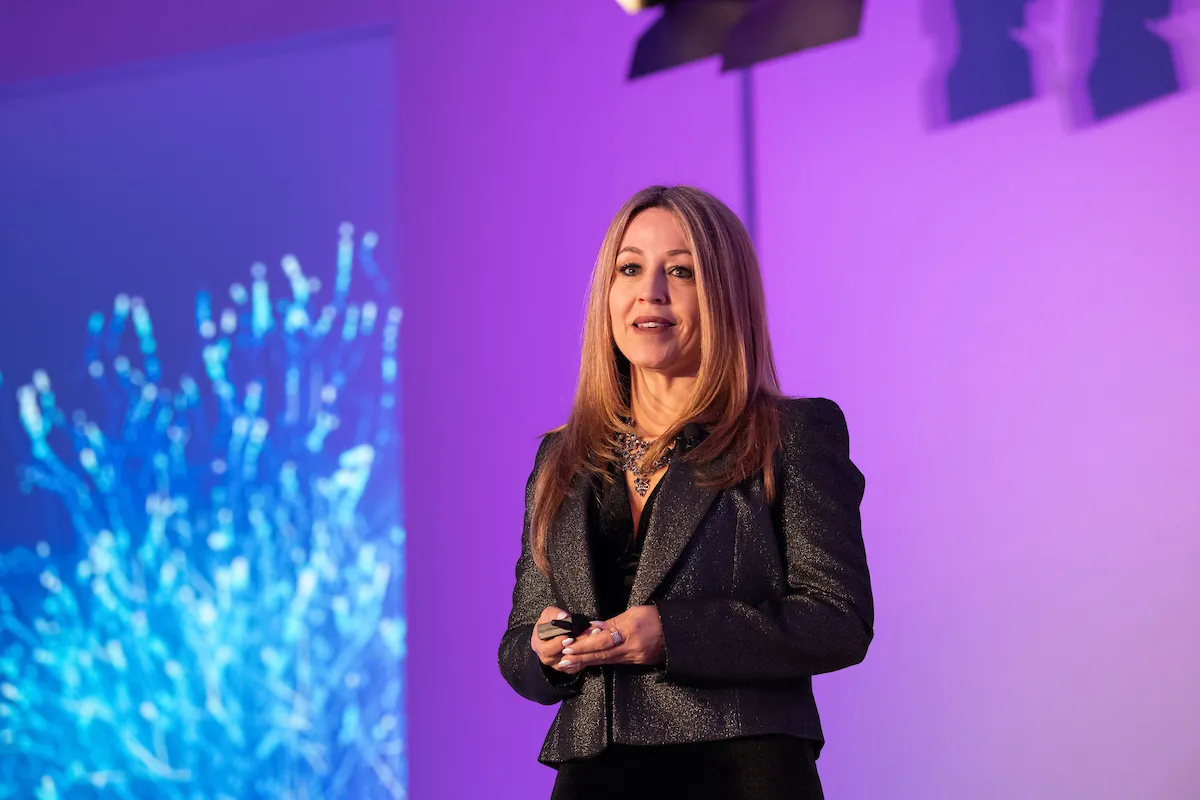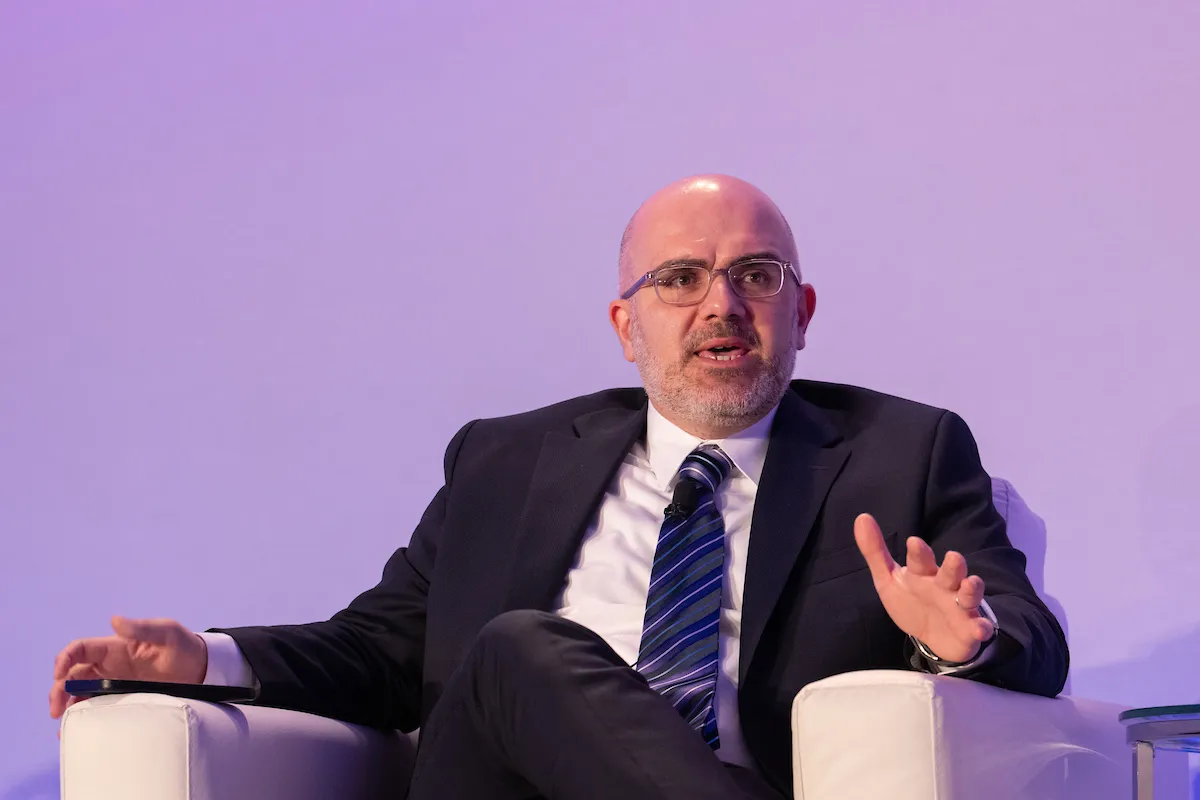Danaher is proud to provide the essential manufacturing infrastructure for the new Center for Pediatric CRISPR Cures, launched by the Chan Zuckerberg Initiative and the Innovative Genomics Institute. Building on the success of “Baby KJ”—the first patient to receive a personalized CRISPR gene-editing therapy—this new Center represents a pivotal step toward making on-demand cures a reality for more children with severe genetic diseases.
As the trusted manufacturing and innovation partner, Danaher businesses Aldevron, IDT, and Cytiva will deliver clinical-grade CRISPR therapies at increasing scale. Danaher supports IGI’s mission to make gene editing the standard of care and to help pioneer a repeatable, platformable, regulatory-ready framework that will empower academic and clinical centers worldwide to develop life-saving therapies for children in need.
We sat down with Danaher CTO for Genomic Medicines Sadik Kassim and Danaher Head of Science & Technology Innovation Vanessa Almendro to discuss the need for a scalable platform for gene-editing therapies like KJ’s and how the Danaher-IGI Beacon for CRISPR Cures, with new support from CZI, will meet that need.
Baby KJ made medical history for receiving the world’s first personalized CRISPR therapy. What were some of the major technical achievements that made this possible?
Vanessa:
Since CRISPR was first discovered over a decade ago, there has been a tremendous amount of effort and a long list of achievements that have enabled its use in therapies. At the highest level, some of the most critical advancements were in making the CRISPR system more specific and thus safer. These included discovering and developing “base editors,” like the one used in KJ’s therapy, that can be programmed to change only a single letter in the genetic code. We’ve also learned that by encoding the editor as a strand of mRNA, we can deliver it into cells more efficiently ensuring transient expression and minimizing the risk of prolonged activity and undesired off-target effects. Lastly, there has been significant progress in optimizing delivery vehicles that can send the editor to the target cells where it needs to be — in KJ’s case, his liver cells. Given the fact that each of these components had established manufacturing processes and a certain degree of clinical validation when KJ’s case came to us, we were able to move rapidly, putting the pieces together to create a new therapy in record time.
Sadik:
Each of the three elements of KJ’s therapy required precise manufacturing processes. As Vanessa mentioned, the editor is manufactured using an mRNA molecule. This was work that Aldevron took on, as they have a clinical-grade mRNA production system. The second element is the guide RNA, which is what makes KJ’s medicine personalized. The guide RNA binds to the editor and takes it to the mutated site in the genome that is causing disease. IDT led the work to identify and produce the right guide RNA. In addition to being ready to do clinical-grade work, IDT had also developed key assays for off-target safety studies, called UNCOVERseq and rhAmpSeq, which again helped us to move fast while maintaining safety. Lastly, the delivery vehicle packages up the mRNA-encoded editor and guide RNA and sends them to the liver. Acuitas already had an approved recipe for a lipid nanoparticle (LNP) delivery vehicle and so we brought them as a partner, and Aldevron produced the final drug product. Having all these manufacturing processes already up and running and validated made it possible to act fast once KJ’s disease-causing mutation was identified.


This was an amazing feat of scientific ingenuity and collaboration. What are the major challenges to making personalized CRISPR therapies more broadly available to patients with genetic disorders?
Vanessa:
One of the biggest hurdles is how CRISPR therapies are regulated by agencies like the FDA. The regulatory frameworks currently in use were developed with small-molecule drugs and mostly chronic indications in mind. For those medicines, the exact same drug is given to every person with a given condition. But genetic diseases, especially rare conditions like what KJ has, require treatments that address mutations that may be unique to an individual. Most regulatory pathways require a randomized, placebo-controlled clinical trial, but in the context of rare disorders and “n-of-one” therapies, this framework is suboptimal. Additionally, the pre-clinical data package requires extensive and lengthy studies for patients who unfortunately often can’t wait; if KJ had had to wait even a few months longer for his therapy, severe neurological damage could have set in. As we recently wrote in Nature Biotechnology with our close collaborators at the IGI, CHOP, the FDA, and elsewhere, we need a new regulatory pathway based on platform designation that can accommodate the need of faster approval process for different gene editing technologies.
Sadik:
We also need to define clear standards for safety and quality for CRISPR therapies. At the same time as we were developing the therapy for KJ we were working with regulators to establish what we called “GMP at Speed.” GMP is Good Manufacturing Practices, and it is the rulebook for ensuring medicines are made at high quality. It was like building a plane while flying it. We need to work with regulatory agencies to set benchmarks and replicable assays so that we can move as quickly as possible in times of need. Additionally, we need to expand our fleet of delivery vehicles. Right now, we can edit safely in liver cells, like we did with KJ, or in blood and immune cells, which can be removed from the body, edited, and then reintroduced. Once we have delivery vehicles that can specifically target cells like neurons or muscle cells, we can treat a wider range of genetic diseases. Lastly, we need to expand access to genetic medicines like CRISPR. Today there are only a few hospitals in the country with the technology and expertise to create and administer these medicines. To reach more patients, we need to empower more hospitals and providers with knowledge.
How do we overcome these hurdles to deliver on the promise of CRISPR?
Vanessa:
In January of 2024 we launched an initiative between the IGI and Danaher that I believe will make significant strides toward addressing these hurdles called the Danaher/IGI Beacon for CRISPR Cures. The goal is to create a new platform framework for the development and regulatory approval of CRISPR therapies taking advantage of their modularity. In an ideal future, physicians diagnosing patients with monogenic diseases, for example, would be able to seamlessly determine eligibility for a gene-editing treatment and initiate therapy development with minimal complexity. The vision is to create a modular, plug-and-play framework in which doctors can select from a pre-approved menu of CRISPR editors and delivery vehicles that have been optimized and validated for safety, quality, and manufacturing consistency, and pair them with a personalized guide RNA tailored to the patient’s specific mutation. To enable this, we are working toward a regulatory paradigm that decouples the approval of platform components, such as editors and delivery technologies, from the individualized guide sequences. Once a patient is identified, the only variable requiring review would be the guide RNA, which would undergo rapid, standardized safety and quality assessments. This approach would dramatically reduce development timelines and make it potentially feasible for clinicians to incorporate genome editing into routine care for eligible patients. This framework would allow us to create therapies like the one for KJ both efficiently and safely. The Beacon is focused on a set of rare diseases known as Inborn Errors of Immunity, or IEIs, and in particular, two of the most severe forms, familial hemophagocytic lymphohistiocytosis (HLH) and Artemis-deficient severe combined immunodeficiency (ART-SCID). This work will be a model for expanding CRISPR to other disease areas, such as Inborn Errors of Metabolism, like what KJ was born with.
Sadik:
Our collaborator Fyodor Urnov at the IGI often refers to this Beacon as creating a CRISPR Cookbook, and that metaphor works well because what we’re building will have both the lists of ingredients (i.e. the reagents, equipment, etc.) and the recipes (i.e. the standardized protocols) needed to make a CRISPR therapy safely and effectively. Since there is so much customization needed to create these medicines, there will also be instructions for how to combine elements to tailor a treatment to a particular patient’s needs. The necessary standards and benchmarks will be baked in to these recipes, ensuring work is carried out at the highest quality. Lastly, we believe that this cookbook will help expand access as it will be a shareable resource, democratizing this knowledge and bringing much needed therapeutic options to patients facing life-threatening diseases.
Where are you in the process of creating this cookbook and what are the next steps?
Sadik:
We see the CRISPR Cookbook as a living document that will need to be continuously updated with new chapters. Over the past 18 months, we’ve written the foundational chapters with the solutions specific for HLH and ART-SCID. With this new collaboration with the CZI, we’ll be able to write additional chapters that expand this work to encompass more IEIs. This expansion is critical as it demonstrate the flexibility, both of CRISPR and of the CRISPR cookbook, to be tailored to the specific drug program and indication as needed. Lastly, I think we are seeing the first signs of a virtuous cycle of collaboration emerging. The cookbook was used by CHOP and Penn Medicine to treat KJ, whose story inspired Priscilla Chan and the CZI to get involved, and now we’re able to increase the scope of this project and help more patients. As this information continues to be shared more broadly, we’ll be able to benefit more and more patients and their families, which is always the ultimate goal.



